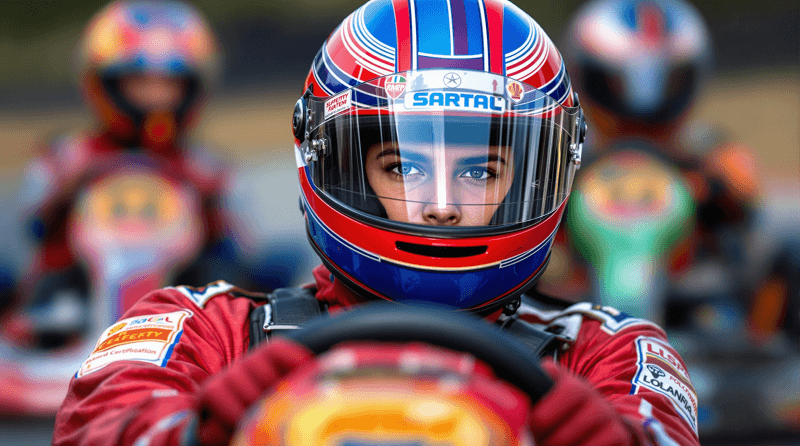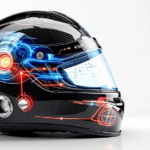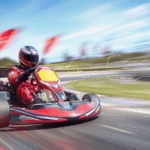I still cringe when I think about my first go-kart race! There I was, helmet strapped loosely under my chin, visor constantly fogging up, and a pounding headache from wearing a helmet two sizes too big. Talk about a rookie disaster! After years of racing and coaching new drivers, I’ve seen just about every helmet mistake in the book—and made plenty myself.
Choosing the Wrong Helmet Size
The most common mistake I see at tracks everywhere is improper sizing. Many beginners think a loose helmet is more comfortable, but this couldn’t be further from the truth. A properly fitted go-kart helmet should create even pressure around your head without any specific pressure points.
When measuring for a helmet, wrap a soft measuring tape around your head about one inch above your eyebrows. This circumference in centimeters corresponds directly to helmet sizing charts. Remember that different brands fit differently—an XL in one brand might feel like a Large in another.
The “room to grow” myth is particularly dangerous with children’s helmets. A helmet that’s too large can rotate during impact, significantly reducing protection when it matters most.
Ignoring Certification Standards
According to the World Karting Federation, proper helmet use reduces the risk of head injuries by up to 69%. But this statistic only applies to properly certified helmets!
Many beginners don’t understand the difference between DOT, Snell M2020, and ECE certifications. For recreational karting, DOT certification might be sufficient, but competitive racing typically requires Snell M2020 certification. Always check your track’s specific requirements before purchasing.
Never use a bicycle helmet for go-karting. Bicycle helmets are designed for single impacts at speeds under 20mph, while go-karts can reach 40-60mph or more.
Neglecting Proper Maintenance
That shiny new helmet won’t stay protective forever. I’ve seen racers using helmets with cracked shells, worn padding, or broken visors—all compromising safety.
Clean your helmet regularly with mild soap and water, avoiding harsh chemicals that could degrade materials. The interior padding requires periodic washing according to manufacturer specifications. After cleaning, allow your helmet to air dry naturally away from direct heat sources.
Most importantly, replace your helmet immediately after any significant impact, even if no visible damage appears. Additionally, manufacturers recommend helmet replacement every five years due to natural degradation of protective materials.
Overlooking Ventilation Features
During my second season racing, I learned just how crucial proper ventilation is. In summer races, my poorly ventilated helmet turned into a personal sauna, causing sweat to pour into my eyes and seriously affecting my concentration.
Modern karting helmets incorporate sophisticated ventilation systems that maintain comfort during intense racing. When shopping for a helmet, look for multiple intake and exhaust vents with internal channeling systems that direct airflow across your head.
Improper Strap Adjustment
I’ve witnessed countless racers with chin straps so loose they could fit several fingers between the strap and their chin. This completely defeats the purpose of wearing a helmet!
The correct way to adjust your strap: it should be snug enough that you can fit only one or two fingers between the strap and your chin. The helmet shouldn’t move significantly when you try to rotate it with your hands. Remember, in an impact, a loose helmet can shift position, leaving critical areas of your head unprotected.
Choosing Style Over Safety
Those flashy, colorful helmets with cool graphics might look great in photos, but never prioritize style over safety features. Focus first on proper certification, fit, and ventilation—then consider aesthetics.
Some racers also make the mistake of adding unauthorized stickers or paint to their helmets, which can damage the shell material and compromise its integrity. Only use helmet decorations specifically approved by the manufacturer.
Using Incompatible Accessories
Adding aftermarket visors, communication systems, or camera mounts without checking compatibility can seriously compromise your helmet’s protective capabilities. Always use accessories specifically designed for your helmet model.
Improper installation of accessories can also create dangerous pressure points or weak spots in the helmet structure. Follow manufacturer guidelines precisely when adding any components to your helmet.
Conclusion
Looking back at my early racing days, I’m amazed I didn’t learn these helmet lessons the hard way with a serious injury! The right helmet, properly fitted and maintained, isn’t just about safety—it’s about giving yourself the best chance to perform at your peak on the track.
Remember that even the most expensive, high-tech helmet won’t protect you properly if it doesn’t fit right or isn’t secured correctly. Take the time to research, try on multiple options, and invest in quality rather than cutting corners. Your helmet is literally saving your brain, so treat it with the respect it deserves!

Goran, an experienced go-kart racer, fuels GoKartLife.com with his passion and expertise. He offers valuable insights and tips for fellow enthusiasts, fostering the growth of the go-kart community. Join Goran at GoKartLife.com and immerse yourself in this exhilarating sport.
Last modified: April 15, 2025



